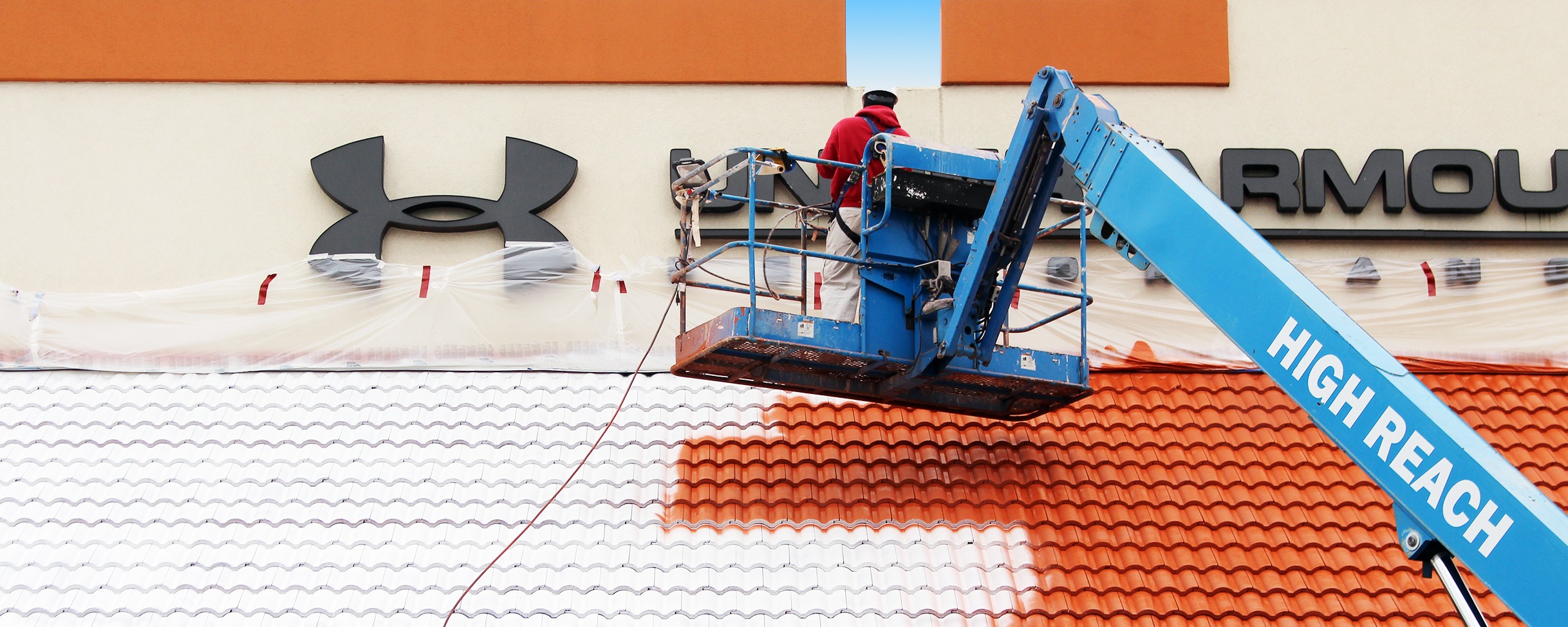
When performing an industrial or commercial painting project, there are many potential hazards to be aware of. As the business owner, you should feel confident your commercial painting contractors have both the safety training and the insurance to mitigate any risks.
Even so, you have a role to play in ensuring the project goes smoothly.
By working with your commercial painting project manager, your team can make some quick adjustments that will raise the efficiency of your project and make accidents far less likely. For example, you might redirect employee foot traffic around the areas that will be painted.
There are good reasons to partner with your commercial painter in ensuring everyone stays safe:
1. You Can Maintain Employee Wellness During and After the Project
While a painting project is active, there are two major risks that apply to everyone working or walking through the area: Improper ventilation and slip and fall.
In well-ventilated areas, paint fumes are just an inconvenience. If air isn’t circulating properly, headaches and other symptoms can arise. Touching fresh paint or other surface treatments can irritate skin and cause eye damage, too.
Painting professionals take many precautions against the risk of falling, but employees should avoid passing through the painted area unless there’s several feet of clearance for them to safely go by. Even then, the best solution is to reroute traffic entirely.
Painters use a full set of personal protective equipment to keep themselves safe. Employees don’t have that benefit. Both they and your contractor will appreciate it when they are given alternate routes or working spaces for the duration of the project.
Remember, risks persist until all materials are cleared away and chemical fumes dissipate.
2. You Can Avoid Paperwork Associated with Reportable Safety Incidents
The best commercial painters are fully trained on all the latest OSHA standards.
If a painting contractor slips, gets sick, or gets hurt, the incident will usually be handled entirely within their own team – although you’ll receive a report including the steps taken to prevent the issue from happening again.
What happens if one of your own employees get mixed up in a painting accident?
Well, just ask your HR department. A reportable safety incident is a real hassle, even if you are in a low-risk industry. You’ll have to sort through workers compensation claims and insurance issues. If customers are around, risks to them could add liability.
It can take up to a year to manage all the fallout from an accident that takes seconds. So, it’s best to have an all-hands briefing that will let employees know about the project, where and when it will take place, and anything they need to do to stay safe.
3. You Can Maintain Employee Morale and Your Brand’s Good Name
When appropriate adjustments aren’t made to employees’ workflow, they often take matters into their own hands. You may find absenteeism up and productivity down until the project runs its course. It’s much easier to adapt from the start.
The same applies to the public. Sure, you can usually avoid having customers around an active paint project. That said, word gets around. You want people talking about how much better your property looks, not the hiccups along the way.
A well-executed commercial painting project can generate a lot of positive buzz. Posting photos of your painted spaces on social media raises awareness for your brand and gets people excited about what you are doing. Safety issues put a damper on that.
4. You Can Minimize Disruption Associated With Your Painting Work
Although many commercial painting firms can handle projects on the weekends, odds are good you won’t be able to schedule your entire project to avoid the work week. If you are trying to avoid the painters being present during working hours, check to see if they provide after-hour services.
If this is not possible, you can truly enhance paint project safety with a structured week-long lead-up to your project. In particular, it is much safer and easier for your employees to move mission critical equipment out of the way of surfaces to be painted.
A disorganized approach to the project doesn’t mean accidents are inevitable. But it does mean getting the results you want may take longer than you would like. Your painting project manager can advise you on how to avoid that.
For Superior Commercial Painting, Choose a Team With OSHA Expertise
Performance Painting Contractors has an in-house OSHA 500 instructor, ensuring our painting project managers are all OSHA 30 certified. All members of our painting crew are, at minimum, OSHA 10 certified – and many hold advanced safety credentials.
Our experience means we never have to compromise on safety to deliver excellence. Your project will start and finish on time and provide durable, high-quality work.






